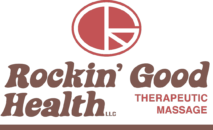In Zen and the Art of Motorcycle Maintenance [1], Robert Pirsig chronicles his quest to understand Quality. My own understanding of quality has changed in my journey from software engineer to massage therapist. As I consider my feelings about massage therapy, Pirsig’s Zen has helped me understand and crystallize my goals.
Zen‘s Quality
As we follow Pirsig’s daily teachings on Quality, we encounter a variety of near definitions. One that hits home for me describes a craftsman’s relationship to his work. We can recognize quality craftsmanship, but what is it about the craftsman of Quality (in this case, a mechanic) that distinguishes him from the mediocre? It is caring. The caring is not about the machine, the object, but for the wellbeing of the machine and its owner.
Caring is the Key to Zen‘s Quality
The Quality craftsman cares in a way that allows him to merge with the object as he practices his craft, without the stuttering interruptions of a novice consulting a manual. He changes as his work progresses, flowing smoothly and naturally from one tool or technique to the next. His work changes in synchrony with the changes taking place in the object of his craft, until both emerge from the process. The subject-object relationship fades to nothing, and there is only the Quality of the work creating the result. There is only the wellbeing of machine and owner, and of the craftsman, too.
Software Quality
When I began work as a software engineer in the 1980’s, the watchword of industry was Quality. The definition of Quality was tightly constrained. A tight definition allows engineers to work with clear understanding. Engineers generally live in a classical, subject-object relationship with their work and with technology.
Fitness is the Key to Software Quality
The engineer’s definition of Quality is simple. Quality is defined as fitness for an intended purpose. A product’s purpose is not only to serve the needs of its end user, but also to generate revenue for the company. The purpose of the product is captured in technical specifications, schedule, and price. An engineer produces a product that can be tested against specifications. When all tests pass on schedule, and at an acceptable price, you have a Quality product.
My Journey from Software to Soft Tissue
I began my career as an engineer building to specifications. I progressed to writing the specifications. I crafted Quality specifications. For years I cared, but not in the way Pirsig describes caring.
I didn’t care about the product. Consumer electronics hold little interest for me. I cared about the process, attention to the details, and about producing Quality specifications. Ultimately, that wasn’t enough. It reduced to seeking Excellence at something with no purpose for me, something that did not result in wellbeing.
When I came to Massage Therapy, I found comfort in the structure of anatomy, the processes of physiology. I became enthralled in the beauty of their combination in kinesiology, and with the utility of its laws.
But what sealed my decision was learning that I care about what happens in a massage therapy session. I care about the wellbeing of the machine and its owner, the muscles and the client, in a way that lets me see and feel a condition of imbalance, excess or deficit. Posture, gate, range of motion all offer clues. The way the skin fits, the ways a muscle feels, all add to the analysis. I adapt what I know while working with my hands, to address muscular issues without an owner’s manual. I change as I sense the changes occurring in layers, from skin temperature and tension, to muscle density and tautness, superficial to deep. The muscle isn’t object. Certainly, the client isn’t object. And my sense of myself as subject disappears. There is only the Quality of the work, caring for the wellbeing of machine and owner, creating the result.
Quality in Massage Therapy
In massage therapy we use the phrase Quality of Touch. An article on the subject says it is not so much an innate ability to attune oneself to the client, but a skill which can be taught, learned and constantly improved.[2]
I feel this attunement when the subject-object relationship fades during a massage session. The ability to attune, the Quality of Touch, all come from caring. A would-be therapist cannot develop Quality of Touch without caring for wellbeing. It is the caring, not the ability, that must be innate.
Understanding and Goals
Can we learn Quality of Touch? I believe I have learned it to some degree, and I believe that it will be constantly improved. I recognize some common muscular pain patterns. I can sense conditions of soft tissue and their changes as I work. My goals are to learn more, to sense more, to attune more, and if possible, to care more.




